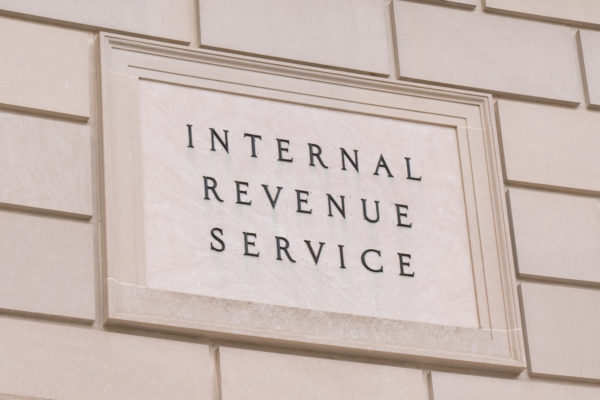Do you currently owe the IRS money? If so, you’re not alone. It’s estimated that Americans owe more than $83 billion in back taxes, tax penalties, and interest.
When you owe a lot of money to the IRS, it’s easy to feel as though you’re trapped in a hole that you’ll never be able to climb out of.
The good news, though, is that the IRS does have programs in place to help you out, including their Fresh Start Program.
Read on to learn everything you need to know about the IRS Fresh Start program to see if you qualify and if it’s a good option for you.
What Is the IRS Fresh Start Program?
The IRS introduced the Fresh Start Program in 2008. They later expanded it in 2012 to help ease the financial burdens many taxpayers were facing, many of which were the result of the economic crash.
The purpose of this program is not to eliminate debt to the IRS altogether. Instead, it provides taxpayers with a set of guidelines to follow that will help them pay off their debts in an affordable way over a six-year period.

Every month, under this program, taxpayers make payments based on their income as well as the current value of their liquid assets.
The program also helps taxpayers avoid some of the serious consequences that can come from owing money to the IRS. This includes the following:
- High amounts of interest
- Expensive penalties
- Tax liens
Those who participate in the Fresh Start Program can also avoid wage garnishments and the seizure of their assets to pay back their debts.
Is This Program Right for You?
The Fresh Start Program isn’t for everyone. There are some specific qualifications you’ll need to meet in order to apply for and participate in the program.
Some of those qualifications include:
- Must owe $50,000 or less to the IRS
- Must be able to prove that you cannot afford to pay your tax debt
- Must have filed all tax returns
- Must have made all estimated tax payments for the year (for those who are self-employed or are business owners)
- Must have made all federal tax deposits required by law (for business owners with employees)
- Must not be involved in an open bankruptcy proceeding
If you meet all these criteria, you may want to consider applying for the Fresh Start Program.
Fresh Start Program Repayment Options
Under the Fresh Start Program, there are a couple of different repayment options available to those who owe the IRS money. These include the following:
Installment Agreement
An installment agreement allows you to make regular payments (installments) until you’ve paid your debt off in full. There are a few different types of installment agreements that the IRS offers:
Guaranteed: This is for tax debts that are less than $10,000 that can be repaid in three years or less.
Streamlined: This is for tax debts that are less than $50,000 that can be repaid within six years or less.
In Business: This is for tax debts that are less than $25,000 that can be paid in 24 months or less.
Routine: This is for those who don’t meet the criteria for any of the other installment agreements.
Installment agreements are the most popular options for individuals who need to pay back money to the IRS.
Offer in Compromise
The Offer in Compromise option is available to those who owe large amounts of money in tax debts but have little income and few assets.
If you’re approved for this option, your debt may be able to be removed altogether. There is not a dollar limitation for taxpayers who request this option, so they’re worth considering for a lot of people.
The IRS does not approve them as often as installment agreements, though, and you may have to do more work in order to make the case that it’s the best option for you.
How to Apply for the Program
If you want to apply for the Fresh Start Program and meet all the criteria listed above, you can visit the IRS’s website to begin the process. The amount of time it takes to apply will vary depending on the specific program you’re looking to utilize.
In most cases, you’ll need to fill out several forms, including Form 656 and what’s known as a 433A if you’re applying for an offer in compromise and Form 9465 if you’re applying for an installment program.
You may want to work with your accountant or another tax professional when you begin this process. They’ll help you make sure you do everything correctly and don’t make any mistakes that could disqualify you from the program.
If you don’t have an accountant or tax professional to call, you can read here to learn more about the application process before you begin.
How to Avoid Owing Money in the Future
Once you’ve been approved for the Fresh Start Program, you’ll be well on your way to financial freedom and won’t have the weight of tax debt on your shoulders any longer. How do you keep things this way, though?
Keep these tips in mind to avoid owing money to the IRS again in the future:
Make estimated quarterly payments on time to avoid penalties
File your taxes on time to avoid late penalties
Take advantage of tax-deferred accounts like IRAs
Be sure to work closely with an accountant or financial advisor, too. If you don’t already have one, now’s the time to hire someone who can help you avoid these situations in the future.
Is This Program Right for You?
Now that you know more about what the IRS fresh start program is and how it works, do you think it’s a good option for you?
If you owe money to the IRS and aren’t sure how you’re going to pay your bills, this program can help. It won’t take away your debt, but it will give you a path to follow to help you repay it and achieve financial freedom sooner.
Do you want to learn more about other IRS programs? Do you just need more general help when it comes to money management?
Either way, we’ve got lots of resources available on our site. Check out some of our other finance-related articles today.

